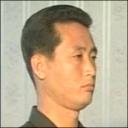Institute for Far Eastern Studies (IFES)
NK Brief No.09-11-30-1
In an effort to seek new ways to develop the inter-Korean joint industrial complex in Kaesong, it is expected that the first joint complex between China and Vietnam will be inspected in the middle of next month. According to a high-ranking official in the South Korean Ministry of Unification, “If the Kaesong Industrial Complex (KIC) is to be made into an internationally competitive industrial complex, [we] need to take a close look at the processes and structure of the international market,” and, “In order to develop the KIC, we decided to inspect a foreign industrial complex, and the North has agreed.”
This inspection was agreed upon during the second round of inter-Korean working level talks in June, and is being looked at as a breakthrough in restarting talks between officials from the North and the South. The source added, “The thought is that the inspection will be of a China-Vietnam industrial complex,” and, “If this overseas inspection goes well, the 3-C problem (Communication, Conveyance, Customs) and issues of visits and sojourns by South Koreans in the complex, dormitories for the North Korean workers, the construction of roads for coming to and from work, and other issues will be advanced.”
The inspection team will include 10 officials from North Korea and 10 from the South, and plans to visit the site for ten days beginning on the 12th of next month. The South Korean delegation is expected to include representatives from the Ministry of Unification, the Ministry of Knowledge Economy, Korea Land Corporation, and members of the KIC management committee. The agreement between the two Koreas to inspect an overseas industrial zone is seen as a sign that inter-Korean relations are improving. It appears that North Korea is continuing to work toward improving inter-Korean relations.
At the very least, it looks like this inspection will foster an atmosphere in which Seoul and Pyongyang can resolve all of the problems, listed above, surrounding the KIC. In June of 2007, 14 Koreans, 7 from the North and 7 from the South, spent ten days and nine nights inspecting the joint Chinese-Vietnamese industrial complex, so expectations are that this visit will further boost inter-Korean relations and KIC competitiveness.
This story was also reported in the Joong Ang Ilbo:
The Unification Ministry announced yesterday that 10 officials from ech country will visit China and Vietnam for about 10 days in mid-December. Ministry spokesman Chun Hae-sung said the two Koreas will continue to discuss detailed itineraries and the makeup of the delegations. Chun added that the trip will be financed by the South’s inter-Korean cooperation fund. It is the third such joint trip to overseas industrial sites, but the first during the Lee Myung-bak administration. The previous two trips took place in June 2005 and March 2007.
The two Koreas have held four rounds of mostly fruitless working-level discussions on Kaesong this year and wrangled over land use fees and wage increases. During the second meeting in June, the South proposed a joint overseas trip, and Chun said the North recently agreed. “We hope the trip will allow the two Koreas to build a consensus on stable development of the Kaesong complex,” he said. “The officials will study legal structures, incentives designed to draw investments and customs clearance. We expect Kaesong to grow into a globally competitive complex.”
While it appears intent on improving inter-Korean ties at Kaesong, Seoul is in no hurry to resume suspended tourism to the North’s Mount Kumgang.

 Back in 2005, the North Korean media was mocked in the western press for encouraging its population to maintain hairstyles consistent with a socialist lifestyle
Back in 2005, the North Korean media was mocked in the western press for encouraging its population to maintain hairstyles consistent with a socialist lifestyle